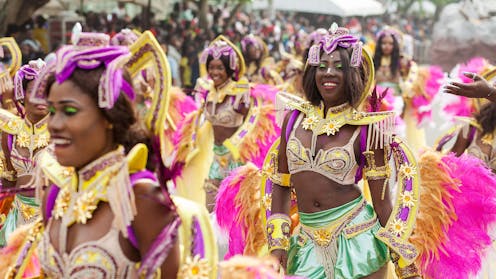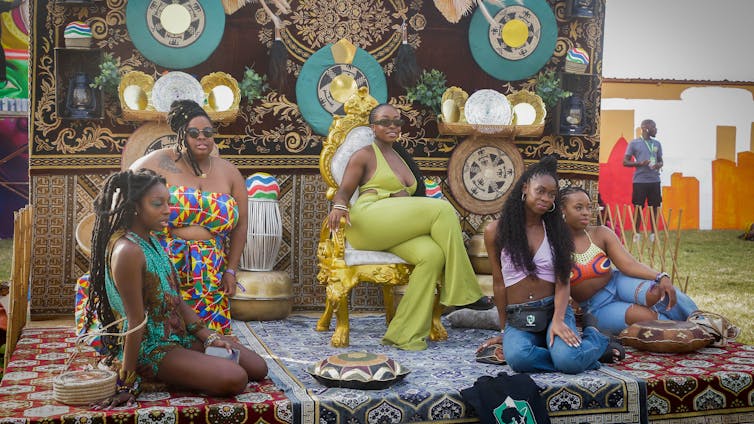Source: The Conversation – USA – By Rachel Silver, Assistant Professor, York University, Canada
Coverage of the impact of the COVID-19 pandemic shutdowns on girls in Malawi emphasised the risks they faced as a result of not attending school. In particular, concerns about pregnancy garnered significant media attention.
The United Nations Children’s Fund, for example, published an article in March 2021 entitled “Schoolgirl shakes off COVID-19 regret: Lucy’s return to school”. Under a glossy photograph of a smiling girl, readers learn about 16-year-old Lucy, one of 13,000 Malawian students who became pregnant during COVID-19 school closures. The story went on to detail the dire consequences of sexual activity to Lucy’s well-being, and the redemptive power of an eventual return to school.
The Unicef piece echoed thousands of similar publications circulated after March 2020 that analysed COVID-19’s unique risk for girls in the global south and lamented lost returns to girls’ education.
In response to COVID-19 surges, Malawian schools closed for over seven months, during which the percentage of pregnancies to young women aged 10-19 did increase from 29% to 35% of total pregnancies.
Yet, our research has demonstrated that international development organisations and media outlets focused mostly on narrow, sexualised framings of risk to African girls and women rather than on the many intersecting and ongoing barriers to their well-being and school retention. These challenges both predate and extend beyond COVID-19.
As scholars of international development education who have conducted research in Malawi for over a decade, we decided to join Malawian educational activist and collaborator Stella Makhuva to research how girls themselves narrated their experiences of the COVID-19 years. What did they consider a risk to their schooling?
Together, we designed a longitudinal study from 2020 to 2023 that included multiple rounds of interviews and participatory journalling methods with 22 upper primary and secondary school girls in southern Malawi.
We found that for girls in our study, COVID-19 was less a rupture – an unusual event that threatened their education in unprecedented ways – than an added variable in the already complex calculations girls and their families made about whether and how to remain in school.
We argue that it was not pregnancy itself, but escalating resource constraints, that kept girls from school. And that interventions must do something about the real problem: inequitable systems.
The stories told by the girls illustrate this. (All the names are pseudonyms.)
Their stories
When Faith joined our study in 2020, she was attending a peri-urban
primary school near her home. She lived in a mud and grass-thatched house with her parents, both subsistence farmers who supported Faith’s and her siblings’ education. During school closures, she studied with friends to keep up with academic content when she was not helping with her parents’ farm.
Yet school costs threatened Faith’s return to school upon reopening. Despite primary school being officially “free” by government mandate, students at her school were required to contribute 800 Malawi kwacha (close to US$1 at the time) per term to a school fund for infrastructure projects and upkeep. Not paying into the fund resulted in exclusion from classes.
When Faith eventually passed the Primary School Leaving Certificate Exam and enrolled in secondary school, the costs to schooling rose from 5,000 kwacha (about US$6.50 in early 2021) to 20,000 kwacha (about US$19 in late 2022). Faith worried about whether her parents, whose maize and tomato yields suffered from poor rains, would be able to pay.
On top of this, Faith paid other costs, from exam fees and bicycle rental fees to supplemental lessons in which she learned material never covered during school hours. She said she and her family often sacrificed eating sufficiently to save money.
Still, Faith was repeatedly pushed out of school until her fee balance was met. Before, during, and after COVID-19 school closures, girls like her were pushed out of school for a lack of regular fee payments.
Faith’s school-going was also threatened by warming temperatures and new rain patterns that left her family with diminished food and income. Added to this were volatility in government agricultural subsidies to small farmers, inflated school fees, and the increasing privatisation of public education in Malawi.
Read more:
Malawi faces a food crisis: why plans to avert hunger aren’t realistic and what can be done
Like Faith, all of the girls in our study worked to supplement their schooling with part time lessons, holiday classes, or by repeating grades given educational quality concerns. Based in under-resourced schools with low exam pass rates, girls knew that they were provided an incomplete education.
According to Brightness,
We do not learn fully what we are supposed to cover, and some teachers tend to be absent during their lessons. This makes us lag behind … As a result during exams they ask some questions which some of us … did not learn.
Empirical evidence has shown how teacher engagement has long been influenced by the region’s high disease burden, especially due to HIV/Aids. This has left teachers both ill and caring for ill relatives.
While teacher disengagement, therefore, reflected factors such as competing care responsibilities, professional dissatisfaction and stress, girls were deeply frustrated by what felt like abandonment.
Rethinking pregnancy and parenting
Mainstream discourses that missed key barriers to girls’ school retention and performance, such as privatisation and food insecurity, misrepresented student pregnancy as an emergent “crisis”.
Prior to the pandemic, sexuality and school-going already overlapped for many girls in Malawi, where adolescent pregnancy rates were threefold the global average. Still, girls in our study countered the idea that schooling and sex were incompatible. They also challenged the idea that school was inherently safe and that it was pregnancy that kept them from school.
Read more:
Education and gender equality: focus on girls isn’t fair and isn’t enough — global study
Many of the girls’ stories emphasised continuity with what came before the pandemic.
We have found this in past research. Schooling and sexuality are not necessarily opposed; but parents and teachers try to protect girls from sexuality; and parenting and non-parenting girls alike face significant resource-related barriers to schooling.
Conclusion
If girls’ choices, particularly around sexuality, do not represent the greatest or only source of risk for girls’ schooling, interventions must respond to this reality. They should support well-being and address the broader conditions in which girls live and learn. The problem is inequity, not pregnant girls.
![]()
Rachel Silver has received funding from the National Academy of Education/Spencer Foundation and the Social Science and Humanities Research Council of Canada.
Alyssa Morley has received funding for this work from the Spencer Foundation and Michigan State University’s Center for Gender in Global Context.
– ref. What keeps girls from school in Malawi? We asked them and it’s not just pregnancy – https://theconversation.com/what-keeps-girls-from-school-in-malawi-we-asked-them-and-its-not-just-pregnancy-258401




